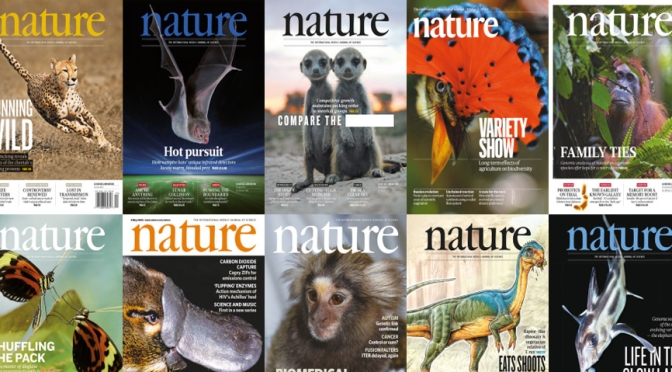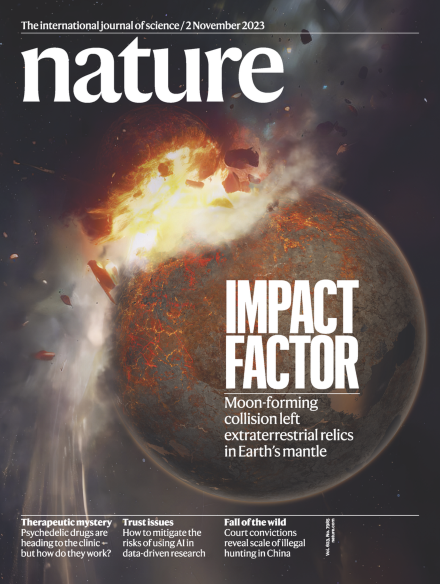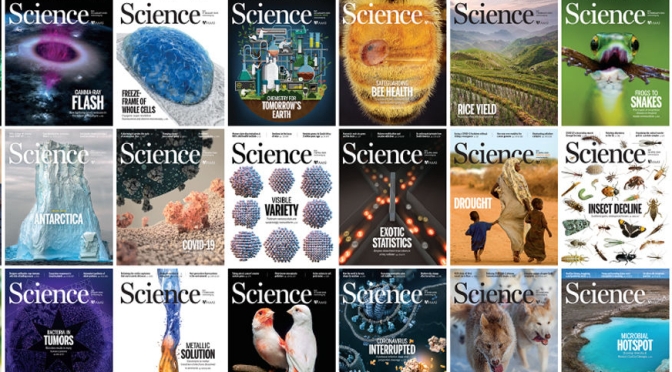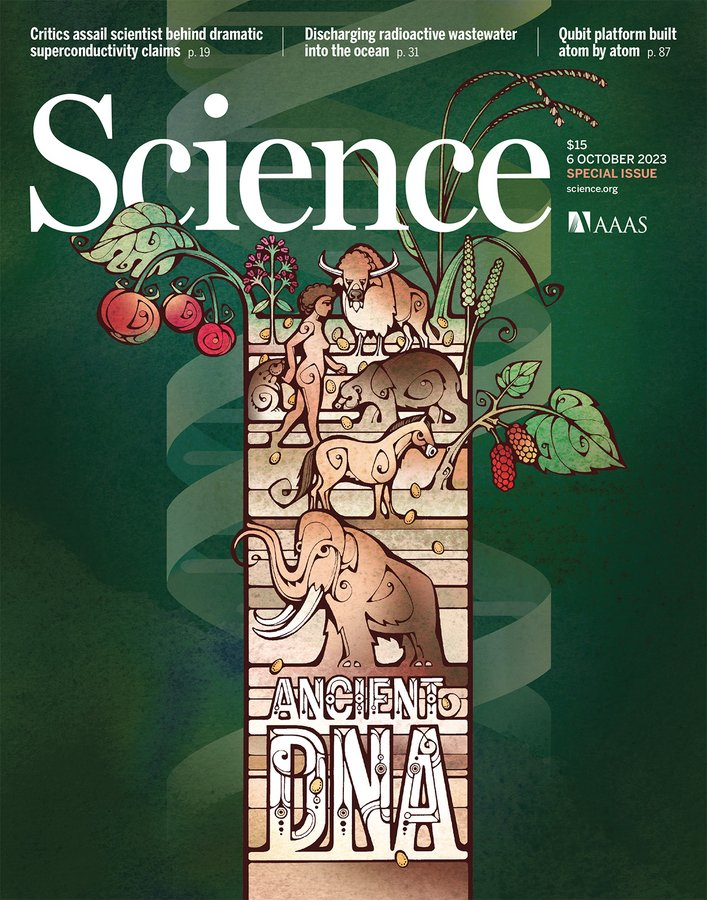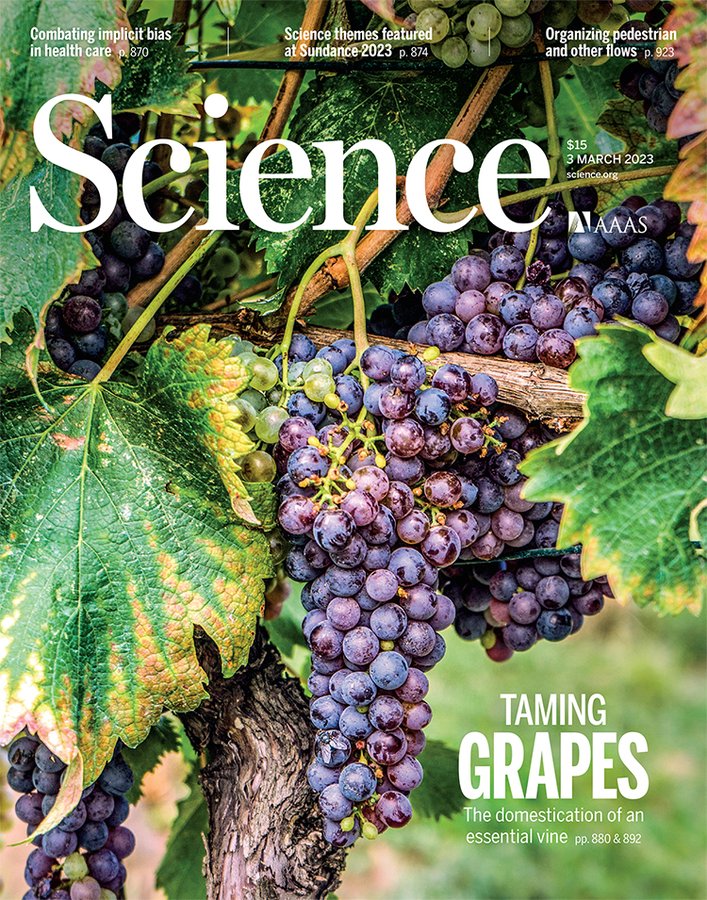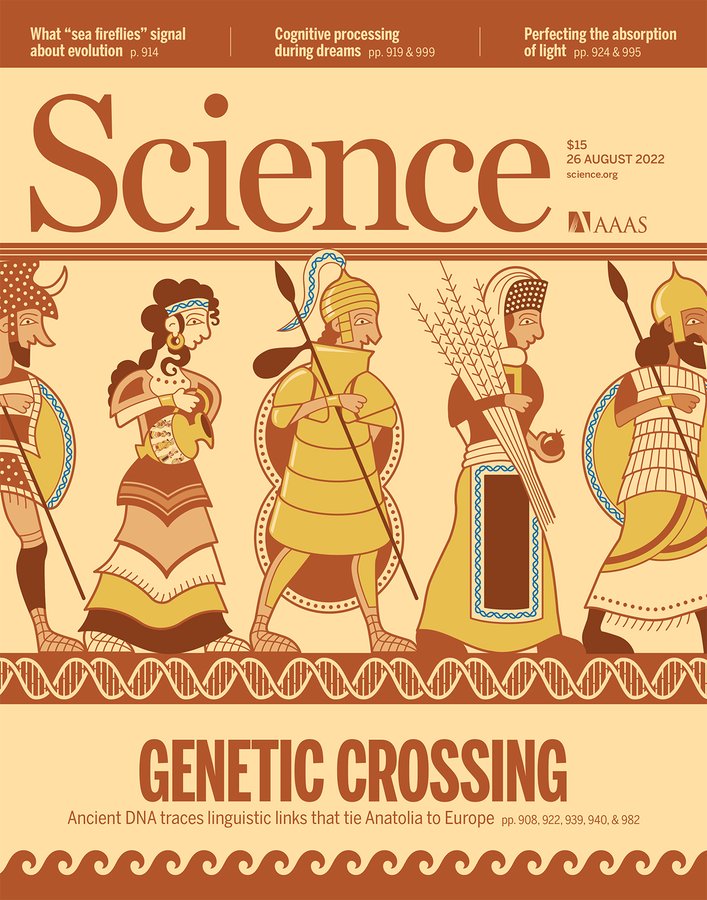nature Magazine – November 2, 2023: The latest issue cover features an artist’s impression of the collision between the protoplanet Theia and proto-Earth about 4.5 billion years ago. It has been suggested that it was this ‘Giant Impact’ that formed the Moon, but direct evidence for the existence of Theia remains elusive.
Ancient DNA reveals traces of elusive first humans in Europe
Europe’s earliest Homo sapiens seemed to have vanished without a genetic legacy — but genomic studies now show otherwise.
‘Mind-blowing’ IBM chip speeds up AI
IBM’s NorthPole processor sidesteps need to access external memory, boosting computing power and saving energy.

